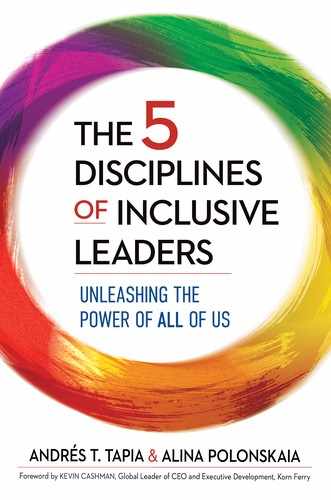GLOSSARY
THIS GLOSSARY IS NOT INTENDED TO PROVIDE an exhaustive list of terms used in the work of diversity and inclusion. Neither is it intended to provide an authoritative definition to cover all circumstances and contexts. Here, we limit ourselves to the definitions of core, and at times differentiated, concepts used in this book.
available labor force The demographic representation of those in different job categories and professions who have the necessary qualifications in skills, education, and experience to do the job.
collective intelligence The positive cumulative and synergistic impact on an organization of the thinking, input, and ideas of the array of diverse individuals within it, working inclusively together.
diversity The mix.
equality A promise that no one will be favored or disfavored based on who they are.
equitable organization An organization in which there is no inequity in access, opportunity, support, and reward, and where outcomes in terms of promotions, achievements, recognitions, and representation are representationally reflective of the available labor force.
equity Examination if the promises of equality were fulfilled; if not, the steps taken to rectify the inequality.
inclusion Making the mix work.
inclusive design for talent systems A methodology for ensuring that talent systems are structured in ways that do not inadvertently or intentionally favor or disfavor any individual or groups of people based on who they are. It also is an approach in which those from all backgrounds have input, influence, and decision-making power.
Latinx Contemporary American English term increasingly used to refer to Latinos and Latinas who are members of Gen Y and Gen Z within the US. It’s gaining in popularity—thought has not reached universal acceptance—for not being gender specific and therefore mitigates the use of the masculine form (“Latinos”) when referring to a group made up of both Latinos and Latinas.
In this book, we used Latinos and Latinas when referring to male and female defined groups, Latinos when referring to the overall demographic group, and Latinx when specifically referring to Gen Y and Gen Z Latinos and Latinas. We chose not to use Latinx to refer to the overall demographic group due to Latinx not being embraced yet by a majority of Latinos as the all-encompassing term, though there’s a growing acceptance to use this term when describing the intersectionality of being a Gen Y or Gen Z Latina or Latino.
overlooked user Talent whose needs, aspirations, and preferences have not been taken into account when talent systems have been designed.
Reference Man The default user around which talent systems have been designed. This default user is defined by those who have traditionally been in the majority and in power.
talent management disparities Areas in the talent management process and in work experience where specific demographic groups have fewer opportunities, access, development, and/or rewards compared to the majority, based on quantitative and qualitative data.
traditionally underrepresented talent Talent from demographic groups that are not reflected in proportional numbers in the workforce relative to their availability in talent pools.
